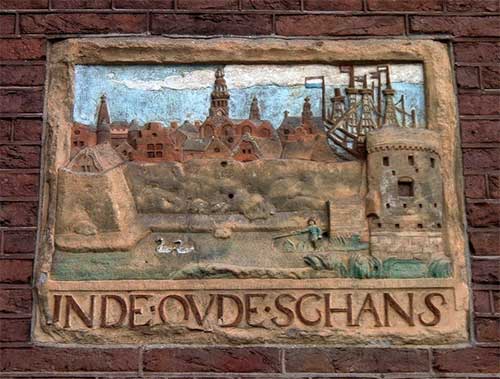Ancient Cities: Development of World Civilization
| Course: | ANT 3141 Ancient Cities: Development of World Civilization |
| Semester: | Fall 2015 |
| Credits: | 3 |
| GenEd: |
Humanities (H) International (N) |
| Instructor: |
Department of Anthropology
College of Liberal Arts & Sciences |
This is a survey course of urban civilizations across the globe, from the earliest roots and variations to modern times. The course will examine major world traditions and periods of urbanism, from earliest examples to modern times, stopping off at various points across the globe to elaborate specific instances of urban development and regional trajectories of change.
The course takes the basic approach of anthropological archaeology, but also includes Western history, urban studies, and cultural studies, as well as other social and ecological sciences. It focuses on cases of pre-modern (AD 1500) urbanism around the world, but also considers more recent development during the Industrial Revolution and twentieth century globalization and mega-cities, including questions of sustainability, social inequality, and globalization. It integrates archaeological and historical case material to explore cities in all parts of the globe, to elaborate specific instances of urban development and regional trajectories of change.
Examine the Origin & Development of Urban Societies
In 2006, for the first time in history, the population of people living in cities outnumbers that in broadly defined rural areas. The transition to settled town life and agricultural food production and subsequent “urban revolution” in various parts of the world, is widely considered as the most important process in human history. Urban revolutions entered a new phase with industrial capitalism, beginning in the 18th century, which forever changed the face of global society and environment. Today, understanding urban societies is critically linked to pressing global concerns regarding quality of life, including ecology and climate, and a host of social issues.

An old street sign in Amsterdam showing a view of the city in the first half of 17th century.
This course takes a critical look at the origin and development of urban societies, how they are portrayed and compared in Western scholarship, and what articulations exist between scholarly research and debate and broader public audiences, including questions of social inequality and human rights, planning and development, and policy. It’s a survey course of major world traditions and periods of urbanism, from earliest examples to modern times, stopping off at various points across the globe to elaborate specific instances of urban development and regional trajectories of change. Major contemporary cities, such as, Cairo, Bagdad, Islamabad, Beijing, Rome, London, Benin, Mexico City, Cuzco, São Paulo and others, and then zoom in or “excavate” specific places and cultural memories to reveal diversity and change in these early urban traditions. It uses case studies from most major world areas to reflect on general characteristics of urban civilizations, including their form, social groups and relations, symbolic meaning, and historical ecology.
What questions will this course ask?
- What is the nature of the city and civil society?
- What is the form of the city?
- What is the ecology upon which it grows and that is “domesticated” by human interventions, and how?
- What does the diversity through time and space of cities – not only their rise and normal functioning but also decline, conflict, and dysfunction – tell us about what it means to be human or urban?
- How does the understanding of cities and urban society through time inform contemporary societies about questions of globalization, social inequality, ecology, public health and security, and policy?

Course Objectives
- Explore the history, underlying theory and methodologies used to understand cities and their history from a broadly anthropological perspective, including humanist, scientific, and critical approaches.
- Identify and analyze key elements, biases, and influences that shape thought about the city through time and space.
- Approach issues and problems from multiple disciplinary perspectives, including linkages between past and present.
- Communicate knowledge, thoughts, and reasoning clearly and effectively in forms appropriate to the discipline of anthropology.
Course Modules
The course is divided into six modules:
- In Module 1, discussion begins with Europe, to explore the development of the Western imagination, including archaeology, particularly after the mid- to late 19th century when ideas about evolution and the archaeological and historical past were taking shape in the face of emerging industrial urbanism, capitalism, and globalization. We consider the development of scholarly thinking regarding the emergence and growth of urban civilization in the ancient world in the context of changing urban life of the time, notably industrialism and capitalism, including: views on social progress and 19th century evolutionism proposed by Darwin’s natural selection, Morgan’s three periods, savagery, barbarism, and civilization, and Marx’s views on pre-capitalist economic formations, the rise of the city and industrial capitalism. Critical perspectives that emphasize diversity and multi-culturalism, globalization, and representations and conflicting views regarding non-Western peoples, including what Edward Said, a Palestinian cultural critic, called Orientalism.
- Modules 2-4 focus on different regions of the globe to explore urban civilization through time and space. We will consider the form, geo-politics, and ecological setting of these early civilizations, focusing on changes in society and nature. The first stops along our journey include the early non-Western traditions of urbanism across the globe, including the “fertile crescent” and “cradle of civilization” in SW Asia and Egypt (Module 2). We then move into the areas farther to the east, the Far East, including the Indus River (Pakistan), and China, among the oldest world traditions, and then SE Asia (Module 3). The voyage continues to the Mediterranean to consider the emergence of European urbanism and civilization and initial globalization, as well as indigenous urbanism to the south in Sub-Saharan Africa (Module 4).
- Module 5 explores Native American cities, some of which seem crudely conform to Old World definitions, such as in the Andes and Mesoamerica, while other present novel cases, such as Amazonia and North America. These challenge us to expand our vocabularies and trait lists, open our minds to alternative pathways of urbanism, like other non-Western cases in Africa, SE Asia. As elsewhere we consider the form and content of pre-modern, non-Western cities.
- Module 6 provides an overview of pre-Modern cities, and then returns to London, ca. 1850, to consider the onset of the industrial urban revolution in the West. We continue to London and Paris in the mid-1800s, to discuss the “capital of the 19th century,” the effect of industrial urbanism on European society and in the imagination at the height of the scientific revolution. Then we explore several 20th Century Cities in the Americas, such as São Paulo, New York, to arrive in the contemporary urban revolution, the urban majority, and what we might call “archaeologies of the future,” which consider questions of justice, security, environment, and global society. It considers changes over the past two millennia in human-nature interactions, including environmental improvements and degradation, as well as the conflict over rights to land and property.

